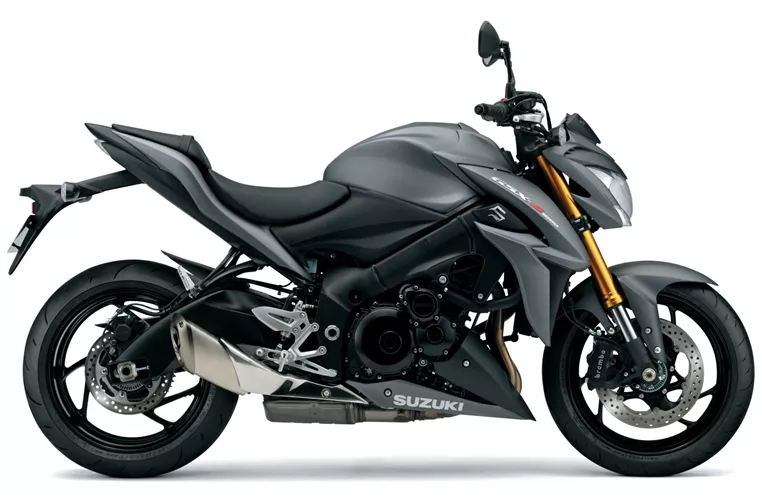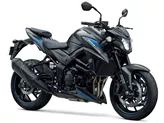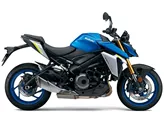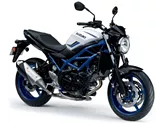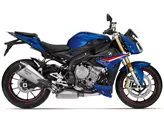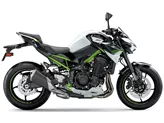Suzuki GSX-S750 2017 vs. Suzuki GSX-S1000 2015

Suzuki GSX-S750 2017

Suzuki GSX-S1000 2015
Vue d’ensemble - Suzuki GSX-S750 2017 vs Suzuki GSX-S1000 2015
In terms of engine specifications, the Suzuki GSX-S750 2017 model year has an inline four-cylinder engine with a displacement of 749cc, producing 114 horsepower and 81 Nm of torque. On the other hand, the Suzuki GSX-S1000 2015 model year also has an inline four-cylinder engine but with a larger displacement of 999cc, delivering 149 horsepower and 106 Nm of torque. This indicates that the GSX-S1000 has a more powerful engine compared to the GSX-S750.
Both motorcycles feature a liquid-cooled engine and fuel injection system, ensuring efficient and reliable performance. They also have the same suspension setup, with upside-down telescopic forks at the front and a swing arm with a monoshock at the rear. However, the GSX-S1000 offers additional adjustment options for the rear suspension, including preload and rebound adjustments, allowing for more precise tuning.
In terms of chassis, both motorcycles have an aluminum frame with a twin tube design, providing a balance between rigidity and weight reduction. This contributes to their overall stability and handling characteristics.
When it comes to braking, both bikes are equipped with double disc brakes at the front with a diameter of 310mm. However, the GSX-S1000 has four-piston calipers at the front, providing stronger braking performance compared to the GSX-S750's double piston calipers.

Suzuki GSX-S750 2017
In terms of advanced rider assistance systems, both motorcycles are equipped with ABS, enhancing safety and control during braking.
In terms of dimensions and weights, there are slight differences between the two models. The GSX-S750 has a front tire width of 120mm and a rear tire width of 180mm, while the GSX-S1000 has a slightly wider rear tire with a width of 190mm. The wheelbase of the GSX-S750 is 1455mm, slightly shorter than the GSX-S1000's 1460mm. The seat height of the GSX-S750 is 820mm, while the GSX-S1000 has a slightly lower seat height of 815mm.
Moving on to the strengths of each model, the GSX-S750 boasts a GSX-R 750 engine with a strong character, providing a thrilling riding experience. It also has powerful and well-controlled brakes, ensuring reliable stopping power. The harmonious design, affordable price, sharp sound, and great lean angle clearance are additional strengths of the GSX-S750.

Suzuki GSX-S1000 2015
On the other hand, the GSX-S1000 has the advantage of a legendary Suzuki engine, known for its performance and reliability. It also offers a sharp sound and rev-happy nature, making it an exciting motorcycle to ride. The harmonious tuning, pleasing design, strong brakes, and taut chassis are additional strengths of the GSX-S1000. Furthermore, it is praised for not having any performance cheating, indicating that it delivers its power in a genuine and honest manner.
However, both models have their weaknesses as well. The GSX-S750 has an acute knee angle, which may cause discomfort for some riders. Additionally, the tachometer on the GSX-S750 is difficult to read, which can be a minor inconvenience.
On the other hand, the GSX-S1000 has an older base, which may not appeal to riders looking for the latest technology and features. It also has weaker performance in the rev range and may experience load change, which can affect the overall riding experience.
In conclusion, the Suzuki GSX-S750 2017 and the Suzuki GSX-S1000 2015 are both impressive naked bikes with their own strengths and weaknesses. The GSX-S1000 offers more power and additional adjustment options for the suspension, while the GSX-S750 provides a more affordable option with a strong character and great lean angle clearance. Ultimately, the choice between the two models will depend on the rider's preferences and priorities.
Caractéristiques techniques Suzuki GSX-S750 2017 par rapport à Suzuki GSX-S1000 2015
Avantages et inconvénients en comparaison
Avantages et inconvénients en comparaison
Suzuki GSX-S750 2017

Plus de puissance, plus de performance, plus de son. Suzuki dément également tous les pessimistes concernant la norme EURO4 et livre avec la GSX-S 750 un successeur de la GSR 750 perfectionné à tous points de vue, qui peut être encore un peu plus sérieux, mais pas forcément. Pour que les moments d'ahurissement ne deviennent pas des moments d'oje, l'ABS et un contrôle de traction à trois niveaux désactivables offrent un coussin de sécurité. Avec des pneus S21 de Bridgestone, la GSX-S est supersport, ce qui permet de profiter de l'angle d'inclinaison maximum généreux. Seul l'angle du genou pointu pourrait avoir un effet négatif sur les longs trajets.
Suzuki GSX-S1000 2015
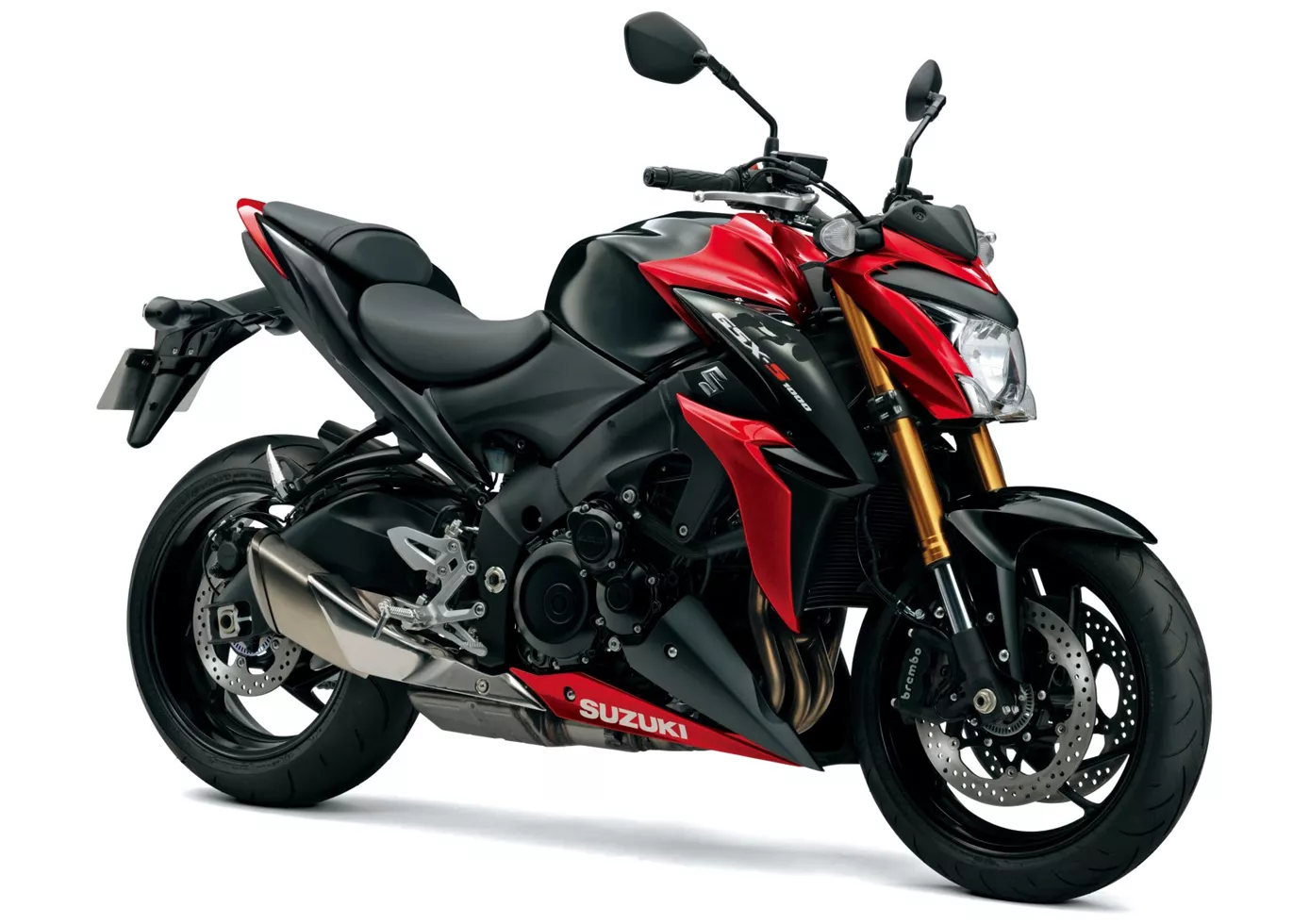
La GSX-S1000 est une moto honnête en termes de performances et de conduite. On obtient même plus que ce qui est indiqué sur le papier, mais pour cela, il faut d'abord que le quatre cylindres en ligne monte en régime. En tant que pilote, on a en tout cas l'impression d'être encore aux commandes, même si la GSX-S n'est plus totalement dépourvue de systèmes d'assistance à la conduite de série - qui fonctionnent très bien. Le contact avec la route est direct, la dynamique est précise et transparente. Ce n'est pas seulement du point de vue du design que cette moto naked peut encore faire plaisir pendant de nombreuses années, la base un peu vieillissante est vite oubliée.
Comparaison des prix Prix moyen du marché Suzuki GSX-S750 vs Suzuki GSX-S1000
There are a few key differences between a Suzuki GSX-S750 2017 and a Suzuki GSX-S1000 2015. In terms of price, the actual average price of a Suzuki GSX-S1000 2015 is about 2% higher. Compared to Suzuki GSX-S1000 2015 there are more Suzuki GSX-S750 2017 bikes available on the 1000PS.de Marketplace, specifically 14 compared to 6. It takes less time to sell a Suzuki GSX-S750 with 84 days compared to 86 days for a Suzuki GSX-S1000. Since model year 2017 1000PS.de editors have written 14 reviews for the Suzuki GSX-S750 and 36 reviews for the Suzuki GSX-S1000 since model year 2015. The first review for the Suzuki GSX-S750 was published on 10/4/2016 and now has more than 50,800 views. This compares to more than 17,100 views for the first review on Suzuki GSX-S1000 published on 9/27/2014.

